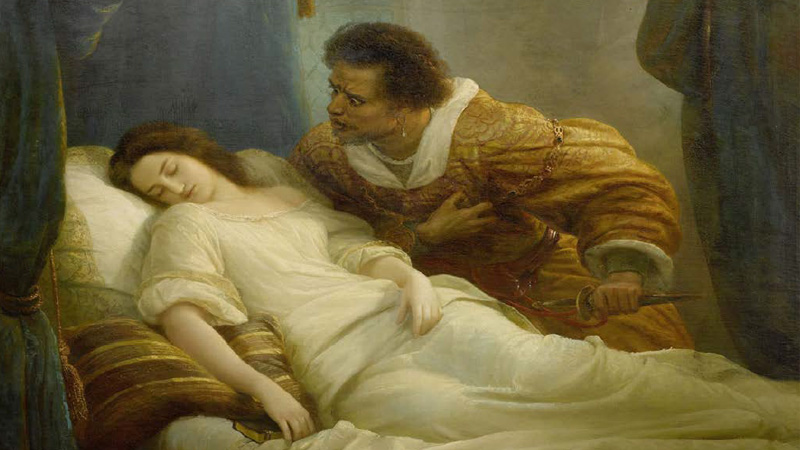In the 400th anniversary of Shakespeare’s death, Humanitas Review has wished to pay tribute to the father of modern drama. Much has been argued about his religious views but there are good historical reasons to assume that he was a Catholic.
This theory is also supported by the many religious references in his works, which reveal that he had a good knowledge of the Catholic ritual and belief. On the same key, his plays convey a favourable representation of Catholic characters and many of his ideal heroines show reminiscences of the Blessed Virgin Mary of the stricken Catholic Church in England in the Elizabethan times, as argued by Clare Asquith in the article below.
A conversion like that of John Silliman Ives*, Newman or Augustine, is life-changing and involves considerable self-sacrifice. Augustine describes the process in terms of a love-affair. ‘Late have I loved thee, O beauty so ancient, so new’ he wrote, ‘late have I loved thee’; and it is in the light of such sublime love-affairs that I have chosen the theme of this lecture.
The concept of holiness as something beautiful and mystical has recently been restored to the liturgy of the Mass. Some of us still stumble irritably over what we see as niggling changes ―‘holy church’; ‘chalice’ ‘into his holy and venerable hands’ ‘that my soul may be healed’,— but the intention has been to restore a lyrical sense of wonder and awe in the presence of the divine which was often, deliberately or not, stripped out after Vatican II. Aquinas described the church as a mystical body, not simply a corporate one —corpus ecclesia mysticum— and it was around his lifetime, in the early middle ages when the worldly Church was, as so often, in crisis, that great writers and artists began to give passionate expression to the beauty of the Mystical Church. The image of the beloved, the mirror, the timeless bride of Christ, who was often conflated with the Mother of God, Maria Ecclesia, would rescue later Christians again and again from despair at the disastrous spectacle of the all too political and worldly church of Rome. The fitful presence of this second, mystical aspect of the Church, Christ’s timeless and transcendent bride, is emphasised in the new translation, reminding us that she is the ‘soul’, or ‘bright shadow’, to use a Shakespearean term, of the often all too banal and human first.
A Shakespearean term is apt, because he is a master at evoking precisely this sense of wonder and awe —at conjuring up what we might call the beauty of holiness. It is one of his most distinctive tricks, and sets him apart from his contemporaries. Look up the word ‘holy’ in a Shakespeare concordance or electronic search and you will find an immense list; the same applies to another of his favourite words ‘soul’,— the list here is well over twice as long again. «It is my soul that calls upon my name»; «Perdition The language of Catholic piety is useful to him; the religious vocabulary adds a resonant bass note to secular situations which he developed fitfully right through his work until its finest expression in his last plays. ‘Soul’ and ‘holy’ occur with exceptional frequency in two of his darkest plays Richard III and Troilus and Cressida, where they act as foils for corruption and wickedness. catch my soul but I do love thee»; «Hang there like fruit, my soul, till the tree die». And this is particularly surprising as he wrote at a time when the subject of contemporary religion was forbidden to dramatists. Curiously, there is no real agreement as to why he does it.
In places he does it because the speaker is a Catholic character who lives either in a Catholic country or at a period when England was Catholic. So for example, Henry IV, weary of kingship, turns his mind to a pilgrimage to the Holy Land, to «those holy fields / Over whose acres walked those blessed feet / Which fourteen hundred years ago were nailed / For our advantage to the bitter cross». Blessed feet - bitter cross - holy fields; these are the kind of affective epithets that have slipped back into the liturgy of the mass, and date back to the free and colourful language of pre-Reformation English piety. However, more often Shakespeare’s allusions to Catholic holiness pop up in a secular context giving the text a deliberate shock quality: an angry soul; a holy kiss; a devilish-holy fray; sanctified and holy traitors; Rosalind dreamily compares Orlando’s kisses to the taste of holy bread. According to Stephen Greenblatt Shakespeare is using the discarded language of medieval piety —banned and associated with blind, superstitious papistry since the Reformation— as a dramatic tool, to intensify and deepen the everyday. The language of Catholic piety is useful to him; the religious vocabulary adds a resonant bass note to secular situations which he developed fitfully right through his work until its finest expression in his last plays. ‘Soul’ and ‘holy’ occur with exceptional frequency in two of his darkest plays Richard III and Troilus and Cressida, where they act as foils for corruption and wickedness.
Harder to explain away as a mere rhetorical device are certain scenes which evoke, not just a brief glimmer of holiness, but what one can only describe as the actual experience of holiness itself. Take the final act of The Merchant of Venice, in which Portia comes home under a night sky bright with ‘patines of bright gold’, pausing to kneel at holy crosses and apprehending for the first time the full beauty of darkness, music, and a distant candle which spreads its beams abroad like a good deed in a naughty world. This hushed yet joyful scene opens with the famous love-duet between the Christian Lorenzo and the converted Jew, Jessica; as Catholics cannot fail to notice, its repeated phrase ‘In such a night’ occurs the same number of times as the very similar phrase ‘Haec nox est’ in the Exultet. This highly suggestive opening alerts us to the many echoes of the Easter vigil in what is otherwise a somewhat superfluous act. Another is the ending of The Winter’s Tale, in which the statue of Hermione miraculously comes to life in the chapel of a great house —«It is required / You do awake your faith»... «Bequeath to death your numbness for from him / Dear life redeems you». And then there is the balcony scene in Romeo and Juliet full of language which is as mystical as it is conventionally amorous. Such scenes are not just bass notes, they are full scale arias which give ordinary romantic dramas an unexpected and mysterious depth.
These effects, remarkable as they are, could still just be seen as the tools of the trade of a great artist born into an atmosphere of Catholic nostalgia, and trained up in the rigorous rhetorical curriculum of Stratford grammar school, where pupils were taught to develop and to enter imaginatively into alien and contrasting points of view. But Shakespeare goes a step further than this.
I propose that the references to holiness and the soul that pepper his work are not merely decorative. They are insistent pointers to what lies within; the jacket cover, as it were, to a buried layer of meaning in which the concept of holiness takes on physical forms, and is actually embodied in certain characters. This is an ambitious proposal. It is almost impossible, now, to recover a lost Elizabethan mindset which expected to see, not just characters on the stage, but entities, such as the divided aspects of England, the state, the Jesuit mission, the dissident underground, the reformation dream, the human soul, the soul of the church, the fading image of Christendom itself. We recoil from the suggestion that such fully realised individuals as Viola, Rosalind and Celia could be anything other than human personalities. Even if we accept that some of his characters may embody a generalised form of holiness, the possibility that they represent particular aspects of holiness is harder still.
But if we approach his writings by working forwards, so far as we can, from the early middle ages —rather than backwards from the 21st century— this conclusion seems not just likely, but, I would argue, inescapable. And it is worth going to some lengths to test this out because, if Shakespeare really is discussing the fate of the mystical body of English Christianity, it will affect the way we see English Catholicism today.
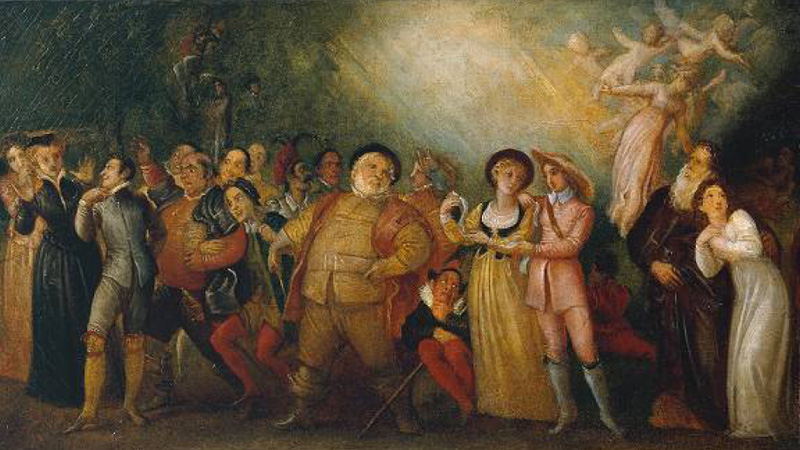
Let us begin with the Bible itself, to which many had access for the first time in their own language. The Geneva Bible, which Shakespeare evidently knew well, came with an explanatory marginal gloss; and the most interesting gloss for many was the interpretation of the Song of Solomon, a dialogue between a bridegroom and a bride. The Bridegroom was seen as Christ; the bride the church, or the soul. This figure of the Bride of Christ was often conflated with Mary, the mother of God and often divided into two — ‘ecclesia’, for instance, the church, and ‘synagogua’ the Jewish bride, both destined to be reunited with Christ at the end of time. […] Ever since the earliest commentaries this beautiful, shimmering chimaera, the figure of the Bride of Christ, the soul, the church, or even the soul of the Church, was taken up with gratitude by Christian thinkers when the visible Church was going through a particularly black and spotted patch. […]
The great debate about the true nature and holiness of Christ’s Church was the one unavoidable question for Christians in late 16th century England. It would be extraordinary if a political analyst as acute as Shakespeare, alone among his leading contemporaries, completely sidestepped this central national issue. Yet this is exactly what is still maintained by mainstream Shakespeare scholars. One of the chief reasons of course is that his treatment of the subject looks so very different from anyone else’s. He lifts the whole complex subject out of the pulpit and the library and into the very heart of lived experience. For him, there was nothing dry and theological about the potential disappearance of Christianity from England. He knew what was at stake. Repeatedly he sets before us both the beauty of Christ’s holy spouse and the nightmare consequence of her absence: a country, a soul, a landscape from which the Christian tradition has been violently and thoroughly uprooted and where men prey on each other ‘like monsters of the deep’.
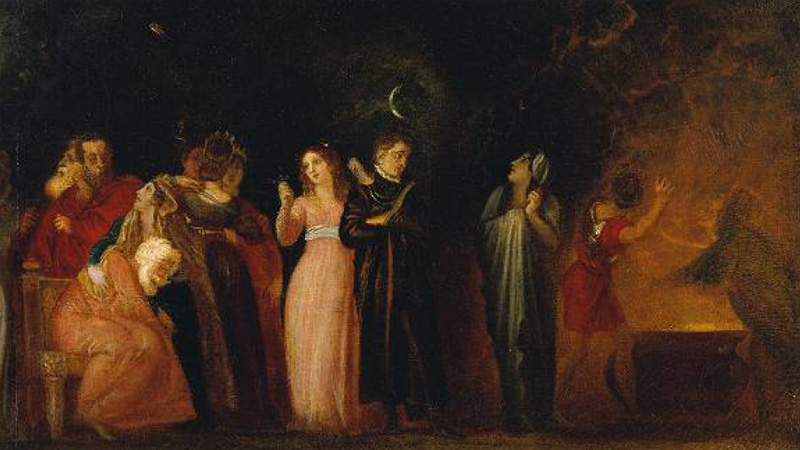
I believe Shakespeare created six major incarnations of this figure of holiness, which evolved slightly over the twenty years that he was active. Surrounded by sacramental and biblical imagery, these curiously passive, still figures embody beauty, truth, goodness, constancy. Their qualities are universally recognised. Simple in themselves, they cause bitter conflict and complex questions of loyalty in others. Unlike the rest of Shakespeare’s women they are almost without character, almost too good to be true, yet we are drawn to them by their graceful, often humorous utterance, and by the lyrical eulogies of their followers. Finally, they are all victims of figures who brutally abuse their authority over them.
Shakespeare begins his treatment of what we might call the destruction of the English image of holiness in relatively jaunty mode in a play only recently restored to the canon —Edward III. The king falls adulterously for the countess of shrewsbury, who repels him with such determination that he withdraws, repents, and returns to his role of militant and protective monarch. This play is a mirror of virtue, an exemplar for the crown and shows how a monarch should resist coveting what is divine: the soul, the conscience, the Church. But The Rape of Lucrece, the next work in which the shimmering figure of the spouse appears, portrays the historical reality in ghastly detail; and the historical reality was that the English image of holiness suffered a violent and irrevocable assault in the course of the 16th century. […] The deflowering of England, and the terrible results are the subjects of Shakespeare’s tremendous poem, The Rape of Lucrece, underrated only because its true subject is not generally acknowledged. lucrece has all the marks of the bride: ‘the picture of pure piety’, ‘chaste’, ‘heavenly’, ‘holy-thoughted’, a ‘shrine’, an ‘earthly saint’. Her only fault is that her lover, fatally, awakes a king’s greed by boasting about her, telling him «what priceless wealth the heavens had him lent».
After the rape, Lucrece foresees three monstrous predators, Time, Night and Opportunity, wreaking the kind of lawless, vandalistic havoc that Shakespeare’s contemporaries described all around them in the 1590s. Lucrece is repeatedly linked to England as well as to sanctity —her heraldry is red and white, she is metaphorically surrounded by sea— dying, she is a ‘pale swan in her watery nest’ and dead, she is ‘a late-sacked island’. Both Edward III and The Rape of Lucrece discuss rape in terms almost openly linked to the dissolution of the monasteries: Lucrece’s ‘consecrated wall’ is ‘batter’d down’, and when Edward argues that he will only possess her body, the Countess answers that body and soul are one —«My body is her bower, her court, her abbey / and she an angel pure, divine, unspotted / If I should leave her house my lord to thee / I kill my poor soul, and my poor soul me». (II i 594-7). Seventy years later it was clear that English piety and holiness had suffered as much as ‘timber, stone and plaster’ in the course of the despoliation. Lucrece is full of lines that give urgent expression to the nature of this attack on what we might now call our spiritual culture, our national heritage.
Lucrece is ‘martyred with disgrace’, and the suggestive word is associated even more forcefully with the second incarnation of the bride, lavinia, in Shakespeare’s horror-play, Titus Andronicus. Here barbaric German incomers have been allowed by the foolish Titus to take over Rome. They not only rape his beautiful daughter, the cynosure of the play, but to prevent her telling the tale, they tear out her tongue and cut off her hands. After this, grotesque barbarism and a repellent cycle of revenge take hold in Rome. In Lucrece is repeatedly linked to England as well as to sanctity —her heraldry is red and white, she is metaphorically surrounded by sea— dying, she is a ‘pale swan in her watery nest’ and dead, she is ‘a late-sacked island’. H59 her newly mutilated state, Lavinia appears on stage. Inexplicably shocking to us, she was now an image familiar to most of the audience, because the statues of the virgin and the saints in most parish churches had suffered exactly these ‘martyred signs’ —hands removed, nose and lips hacked off. So deliberately unreal is Lavinia that the onlooker, instead of coming to her aid, embarks on a long lament in the style of elegies in the Latin plays written by Catholic exiles abroad, which used the iconoclasm in Byzantium as an image for England. «What stern ungentle hands / hath lopp’d, and hew’d, and made thy body bare / Of her two branches —those sweet ornaments / Whose circling shadows kings have sought to sleep in?». This architectural imagery of shadowy arches echoes contemporary laments by writers of all persuasions for the Reformation destruction of tombs, and the chantries, priories and abbeys that contained them. Shakespeare clearly understood the irreplaceable nature of what was being destroyed, as his generation helplessly witnessed the final phases of the iconoclasm […].
With Othello we move forward to the new Jacobean threat to English image of holiness. James had given specious promises and a brief respite to Catholics, but there followed an even more stringent crackdown, and with the loss of Spain as a Catholic ally, worse it seemed would follow. Though the Catholic nobility like the Howards and Somersets were more or less immune, so long as they attended the state church, the complete ‘extinction’ of grassroots Catholicism in England was Robert Cecil’s explicit goal. Shakespeare now revisits the assault on holiness in Othello but this time it is the finality of the extinction that he is concerned to stress, and greed is no longer the motive —it is tragically misguided, self-deluding idealism. Othello approaches the sleeping desdemona using strikingly similar language to that of the reluctant iconoclasts in England, aware of the momentous nature of the act but convinced of the virtue of their cause, the eradication of superstition and blindness. […]
‘Divine’ Desdemona has distinctive Catholic attributes, and is associated not just with the chaste bride of Christ, but with the figure of Mary, the mother of God. She is greeted by Cassio, as she steps safely ashore after her stormy passage, in words designed to recall the Rosary, the practice of which was freshly revived by the papacy after the victory of the Battle of Lepanto, the context not only of Othello but of the poem by King James on which the play is partly based. When Desdemona steps ashore after the storm, the virtuous Cassio —a man who Iago jealously notes ‘has a daily beauty in his life’— asks the company to kneel to welcome ‘the riches of the ship’. We hear the Hail Mary in the lines that follow: «Hail to the lady! And the grace of heaven / Before, behind thee, and on every hand, / Enwheel thee round!» The odd word ‘enwheeling’ actually evokes the shape of the rosary. The famous willow song Desdemona sings at her death, associated with a maid In her newly mutilated state, Lavinia appears on stage. Inexplicably shocking to us, she was now an image familiar to most of the audience, because the statues of the virgin and the saints in most parish churches had suffered exactly these ‘martyred signs’ —hands removed, nose and lips hacked off. H60 called Barbary, prophecies not simply her death, but martyrdom. Saint Barbara was a virgin martyr whose story Shakespeare’s audience would have known from the Golden Legend, and in Northern Europe the willow was synonymous with the palm, the symbol of martyrdom (Palm Sunday was then called Willow Sunday in England, as it still is in Russia) The worldly Emilia’s blood-stirring defense of her dead mistress and her own heroic self sacrifice exemplify the way humble followers in these plays awake us to the true worth and nature of the threatened bride.
In King Lear, unflinchingly honest, loving, tender, a healer, cordelia is the most Christ-like of all incarnations of the bride: ‘Fairest Cordelia’ says the King of France, «that art most rich, being poor / Most choice, forsaken, and most lov’d, despis’d!» After her banishment Shakespeare depicts the imagined picture of a Britain without any trace of Christianity. King and country spiral into madness and barbarism; the trappings of civilisation slip away, cruelty becomes the norm. In the original, anonymous, version of King Lear, Cordelia has a specifically Catholic identity —her invasion, for instance, is supported by the Catholic mercenaries known as Redshanks. But in Shakespeare’s Jacobean rewrite, potentially sectarian references are omitted: she is the all-embracing Christian bride. When she returns she brings music, courtesy, medicine, pity, clean clothes; she speaks to her father as lovingly as the father does in the parable to the prodigal son who has been, ‘hovelled with swine’. In the original version, the invasion is more of a bloodless coup —Cordelia is warmly welcomed back with her father. But here, shockingly, the invasion fails. Cordelia is rejected, and dies. Just as with Desdemona, the impact of her death is one of the most final in literature— ‘She’ll never come again’, says Lear, repeating the single word ‘Never’ five times in the next line.
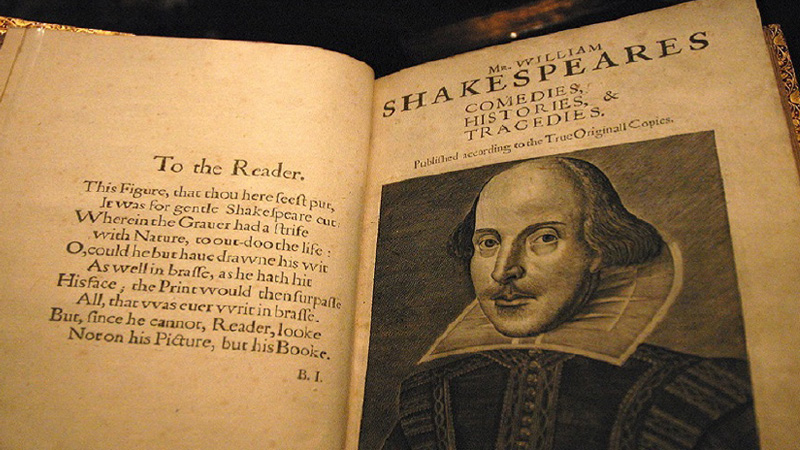
For several years, Shakespeare completely abandoned the figure of the peerless bride, who does not appear in Macbeth, Timon of Athens, Troilus and Cressida, Coriolanus, Antony and Cleopatra. But then, with Pericles, occurs one of the greatest key changes in his work. The next three plays revisit the sad story of figure of English holiness, assaulted and apparently lost. But with a new generation it seemed, came new hope. The lost figure is miraculously revived, and united with her successor and youthful mirror image —a daughter, who emerges from trials and tempests, and who Shakespeare is careful to merge with her mother at the end of the play. The sacramental daughter is the new, Jacobean incarnation of heroic English holiness, of the new spirituality fostered by missionary priests and tempered by continuing waves of persecution. Shakespeare trials this story in Pericles, and tries an ambitious variant in Cymbeline, but perfects it in A Winter’s Tale. Here, he stages the classic bridal figure in hermione, passive, beautiful, heroically loyal a ‘gracious, innocent soul’, a ‘most sacred lady’, hotly defended by Paulina, a feisty supporter as vigorous as Emilia. Seized by a jealous frenzy, her husband Leontes abruptly accuses her of adultery and sends her and her baby daughter to their death, in a scene strongly reminiscent of Henry viii’s treatment of Catharine of Aragon. The baby, Perdita, survives, is found in a storm by shepherds, and reared as their daughter in Shakespeare’s most realistic English rural setting, where she blooms in true bridal mode, becoming the object of mystical contemplation by her lover. At the end of the play Paulina invites Hermione’s remorseful husband to view a statue of his dead wife, which stands in a chapel in her house. In a scene fraught with sacramental language, the statue comes to life —Paulina, like so many English Catholics has been secretly preserving what was lost. But the lost and recovered bride is not a fossil or antiquated relic: the fresh, young, vital Perdita falls into her mother’s arms. Just as in Pericles, the mother is subsumed into the daughter, her new self, who has here been reared and survived and flourishes in the highways and byways of the country, not sequestered in the recesses of great houses.
These five figures, and the daughters that succeed them —marina and perdita— represent what one might see as Shakespeare’s evolving portrait of the spouse of Christ, the mystical bride as she appeared in England; at first, assaulted and raped under Henry VIII; next, despoiled, vandalised and martyred under Edward and Elizabeth; next, wooed by James only to suffer worse persecution; and finally reviving with the next generation. Around this still figure swirls the vortex of disrupted figments of the once intact church and country, and their various conflicted followers, the chief material of his work, and beyond the scope of this talk.
Instead I would like to end with a remarkable sonnet in which Shakespeare commits unequivocally and personally to this timeless, universal figure of holiness. It must have been written somewhere around 1608, when that key change occurs, and he began his optimistic last romances. Sonnet 124 is, if you like, a pocket Apologia. […] the argument is that of Newman: however faulty the visible church may be, it is on the mystical level the holy city, built by Christ on the impregnable rock of Peter. . ‘If my dear love were but the child of state / It might, for fortune’s bastard, be unfathered’ he begins. In other words, the religion of a temporal state can only be temporal. Four times over the last fifty years in England, a head of state had overturned a predecessor’s choice of religion. The strong word bastard reminds us that Henry viii had actually disinherited and bastardised his daughter Elizabeth. Next —‘weeds among weeds and flowers with flowers’ are plucked ‘subject to time’s love or to time’s hate’. The state disposes of the hated, unorthodox weeds, and gathers the conformist favourite flowers— and the status of both, like weeds and flowers, is fleeting, because both, like the state, are of course seasonal. Against this Shakespeare opposes solidity. The poem’s pivotal line ‘no, it is builded far from accident’ uses Christ’s own image of a church ‘built’ upon rock. ‘Far from accident’ touches on his favourite distinction between shadow and substance, soul and body, which we have seen in this talk. So much for the state church —now he sets about dismissing two aspects of English Catholicism which also have nothing to do with the true church. The true church ‘suffers not in smiling pomp’ —it should not act like the Catholic nobility or Catholic powers abroad who, for their own interests, acquiesced in the regime, while closing their eyes to the predicament of ordinary English Catholics. Neither does the true church endorse terrorism. ‘Blow’ was, famously, the coded word in the Monteagle letter that had alerted King James to the imminent Gunpowder Plot; Shakespeare, it is widely recognised, uses it as a political allusion in Macbeth. The brilliant couplet on ‘the blow of thralled discontent’ gives a snapshot of the Machiavellian state cunningly fomenting treason in a group Shakespeare calls ‘our fashion’ —a phrase interpreted by commentators as ‘the likes of me’. Now he reaches the climax. Both these Catholic groups - terrorists and the grand, immune conformists with their private chapels— are motivated by fear of England’s ‘heretic’, opportunist politicians. Against shorttermist, heretic policy, Shakespeare now opposes the divine polis, Augustine’s City of God —the single, universal ‘hugely politic’ church, a ‘builded’ structure not subject to the fluctuations of nature. Finally, most commentators see a reference to Catholic martyrs in the last couplet. Here are Edmund Campion’s ‘fools for Christ’ who Shakespeare calls on to bear witness to the truth of what he has just written. Uncompromising Catholics, yet loyal to their rigidly Protestant country, their agonisingly paradoxical situation is the subject of much of Shakespeare’s work —English men and women who were traitors, criminals and heretics in the eyes of the state, yet saints and martyrs according to the universal church.
Perhaps, given the occasional presence of red-hot political poems like these, full of what has been called ‘radioctive’ Catholic reference, it is not surprising that the Sonnets ran to just one edition. […] Three years later, Shakespeare retired, —and in his last play, he portrayed dark forces attempting to steal the books of his alter ego, Prospero. However harmless the portrayal of the beautiful, holy, universal bride may seem to us now, when he staged characters like Cordelia and Desdemona for the court Shakespeare was playing with fire. His courage and persistence is a reminder, in this relaxed and relativist age, that he, along with Newman and Ives was a man for whom holiness was not simply a thing of beauty; it was an integral attribute of something non-negotiable and life-changing —the truth.

